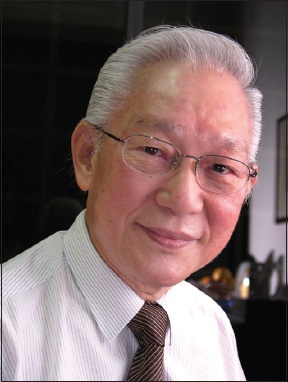
Associate Professor Loong Si Chin passed away peacefully on 15 May 2022 at the age of 87. With his passing, we have lost a great teacher, master clinician and father of neurology. He remained a committed educator and mentor throughout his life, and made pioneering contributions to the teaching and practice of neurology in Singapore and beyond. Today, his clinical innovations and techniques are practised by doctors all over the world.
Born in Seremban, Malaysia, Prof Loong graduated from the University of Malaya in 1961. He trained in neurology at Prince Henry Hospital in Sydney, Australia, under Prof JW Lance from 1967 to 1968. As Chief of Neurology, he was instrumental in setting up the first combined Department of Neurosurgery and Neurology in Singapore at Tan Tock Seng Hospital in 1973. He became the Head of Neurology from 1977 to 1978 when the combined department was split.
Prof Loong went into private practice in 1978; however, he continued to contribute generously to neurological patient care as a visiting consultant and educator, giving weekly neurology tutorials at Tan Tock Seng Hospital. He also taught at the Singapore National Eye Centre, National University Hospital’s Department of Ophthalmology and Alexandra Hospital, and conducted clinical tutorials for medical students from the NUS Yong Loo Lin School of Medicine and Duke-NUS Medical School. After retiring from private practice in 2016, he re-joined the National Neuroscience Institute and continued to run teaching clinics with neurology senior residents and contributed actively to clinical diagnostic and management discussions.
Prof Loong’s clinical acumen was legendary and his ability to stay abreast of the latest developments was bar none. He was a role model for disciplined and self-directed learning and often said that to be a good doctor, one had to be ‘obsessed’. He practised what he preached and was known to read 27 neurological journals from cover to cover every month. During his standing-room-only case discussions at the department Grand Rounds, he would pick up and demonstrate the subtlest neurological signs that would clinch the diagnosis, and quote the most current and pertinent articles that would consolidate the understanding of the case. A doctor from Hong Kong used to attend the weekly Grand Rounds of Prof Loong, flying into Singapore in the morning and back to Hong Kong after the rounds, until he passed all his postgraduate exams.
Among Prof Loong’s lasting contributions to the field of neurology were his ingenious tweaks to standard clinical examinations, such as the proper elucidation and interpretation of pyramidal reflexes (e.g. Babinski, superficial abdominal, jaw and finger reflexes), some of which were novel techniques.(1)
Throughout the years, Prof Loong taught and mentored multiple generations of neurologists, internists, neurosurgeons and neuro-ophthalmologists, both locally and regionally. He had the remarkable ability to simplify complex topics and extemporaneously customised his teaching to suit the level of his students. He taught cogently about approaches to various neurological problems and came up with simple rules for complicated conundrums, such as the rules of cranial neuropathies and evaluation of visual loss and diplopia.(2) His teachings have since spread far and wide to neurologists in all corners of the world, to the benefit of countless patients. Doctors as far afield as India, Pakistan, Kenya, the United Kingdom and the United States practise Prof Loong’s bedside clinical innovations and recite the humorous mnemonics he invented, such as, “
Beyond his strict and disciplined persona, Prof Loong was a keen lover of the arts. He collected contemporary Chinese paintings and appreciated Chinese and Western poetry. He loved classical music and had a remarkable record collection. He enjoyed fine food but ate sparingly and practised moderation in all things.
Prof Loong’s final illness poignantly laid bare the prescience of his own teaching. He had often recounted how the French internist Armand Trousseau (1801–1867) recognised that a localised cancer could induce a generalised hypercoagulable state in which thrombosis could occur elsewhere in the body.(3) Prof Loong found the same sign in himself, and was subsequently diagnosed with disseminated lung cancer. As he underwent treatment, he yearned to return to teaching, and continued to attend Grand Rounds over Zoom video conferencing.
Prof Loong was a devoted and doting husband, father and grandfather. He is survived by his beloved wife of 60 years, Liew Ping, two children, Tze Wey and Shih Huey, and six grandchildren.
A giant among men, Prof Loong enriched the lives of all he touched. Throughout his illustrious career, he remained hardworking, gracious and appreciative, and exemplified compassion, kindness and humility. In a reply to a thank-you letter from one of his students, he quoted from the French philosopher Albert Camus: “Don’t walk in front of me… I may not follow. Don’t walk behind me… I may not lead. Walk beside me… just be my friend.” Truly, Prof Loong taught us how to be human and was an inspiration to us all. We will miss him deeply.


